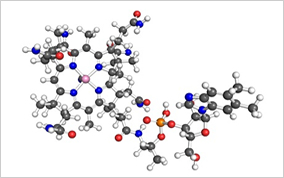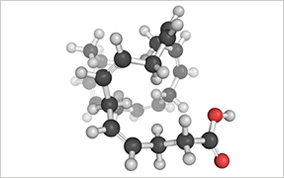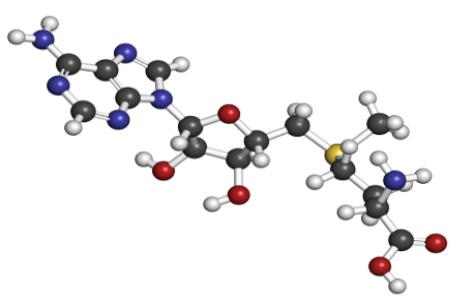Omega 3 ALA
Health benefits of Omega 3 ALA:
Omega 3 ALA contributes to the normal functioning of your heart and the maintenance of normal blood cholesterol levels
The Worlds Science
See the bottom of this page for the ingredients highest in omega 3 ALA
Omega 3 Essential Fatty Acids (n-3 PUFA)
Health benefits of n-3 PUFA
n-3 PUFA can help maintain normal blood pressure and can also contribute to the healthy functioning of the heart. They may also reduce the likelihood of developing poor eyesight in old age.
What are n-3 PUFA?
The three main n-3 PUFA are alpha-linolenic acid (ALA), eicosapentaenoic acid (EPA), and docosahexaenoic acid (DHA).
ALA is an essential fatty acid, meaning that your body cannot make it, so you must get it from the foods and drinks you consume. Your body can convert some ALA into EPA and then to DHA, but only in very small amounts. Therefore, getting EPA and DHA from foods is the best way to increase levels of these n-3 PUFA in your body.
ALA is found mainly in plant oils such as flaxseed, soybean, and canola oils. DHA and EPA are found in fish and other seafood1.
Why does it matter to me?
n-3 PUFA are important components of the membranes that surround each cell in your body. DHA levels are especially high in retina (eye), brain, and sperm cells.
n-3 PUFA also provide calories to give your body energy and have many functions in your heart, blood vessels, lungs, immune system, and endocrine system (the network of hormone-producing glands)2.
n-3 PUFA have generated considerable interest in recent years due to evidence which suggests that they may be involved in improving several aspects of human health.
Normal Function of the Heart (cardiovascular health)
The effect of n-3 PUFA upon cardiovascular health has received considerable research attention during the past several decades. The literature is extremely extensive and complex but, collectively, the results appear to demonstrate that regular consumption of n-3 PUFA reduces the risk of developing cardiovascular disease (CVD)3.
However, there currently exists an unresolved paradox in the literature since the most recent Cochrane meta-analytical study concluded that increasing the quantity of n3- PUFA in the diet has no significant beneficial effect upon CVD, coronary deaths, stroke or heart arrythmia (irregularities of the heartbeat)4.
One possible reason may derive from a rise in background dietary intakes of n-3 PUFA in study populations. Public-health messages extoling the benefits of fish consumption may have led to higher dietary intakes of n-3 PUFA among participants in more recent studies than in older studies. A threshold effect might exist, above which increased n-3 PUFA intake offers little or no additional cardiovascular benefit5.
The effect of n-3 PUFA upon cardiovascular health continues to be a very active area of nutrition research. However, in the meantime the best advice is to incorporate the recommended quantity of ALA containing oils and EPA/DHA containing fish into the diet.
Maintenance of Normal Blood Pressure
During the past three decades many studies have investigated the effects of the dietary content of n-3 PUFA on the development of hypertension (high blood pressure) in previously normal subjects.
A recent meta-analysis included 8 of these studies with more than 56,000 participants who were followed up over a period of 3 - 20 years. Normal subjects with the highest dietary consumption of n-3 PUFA had a 27% lower risk of developing hypertension than subjects with the lowest intake.
These findings suggest a significantly lower risk attributable to hypertension in populations whose subjects are exposed to diet rich in n-3 PUFA, which is highly relevant considering the high prevalence of hypertension in the general population6,7.
In summary, current evidence supports the hypothesis that n-3 PUFA significantly decreases blood pressure in hypertensive patients and might also prevent the development of new-onset hypertension in subjects whose blood pressure is currently normal.
Maintenance of Normal Blood Triglyceride Levels
Triglycerides are a type of fat (lipid) found in your blood. When you eat, your body converts any calories it doesn't need to use right away into triglycerides. These triglycerides are stored in your fat cells. Later, hormones release triglycerides to provide energy between meals.
Recently there has been increasing attention devoted to the relationship between high levels of triglycerides in the blood and the risk of developing cardiovascular disease. The evidence suggests that high levels of blood triglycerides increase the risk of developing conditions such as atherosclerosis (hardening and narrowing of arteries) which can, in turn, increase the likelihood of suffering from heart attacks, angina and stroke8.
Metanalytical studies indicate that increasing the dietary intake of n-3 PUFA can significantly reduce the amount of triglycerides present in the blood and may therefore be useful in improving these aspects of cardiovascular health9.
Omega 3 contributes to the maintenance of normal vision
Normal vision can be impaired by many biological conditions. One of the most common is called ‘macular degeneration’, a condition in which the retina gradually deteriorates causing a progressive reduction in the ability see the world around us.
There is a growing body of evidence which suggests that regular consumption of n-3 PUFA in the diet can reduce the risk of suffering from macular degeneration, especially in old age. For example, two recent studies have revealed that individuals who consume large amounts of oily fish in their diet have a significantly reduced likelihood of developing ‘age related macular degeneration’ (AMD)10,11.
Interestingly, the association between supplementary intake of n-3 PUFA and AMD was much less clear perhaps because lifetime exposure to dietary sources is more effective than short term supplementation12.
Omega 3 contributes to maintenance of normal brain function
Although n-3 PUFA is abundantly present in the brain, relatively little is known about its influence on human brain development and function. Public opinion and media coverage suggest that it is beneficial to brain functioning, however, it is unclear to what extent the scientific literature supports this notion13.
Although some studies contest that high levels of n-3 PUFA consumption can supplement the treatment of conditions such as depression, schizophrenia and Alzheimer’s disease, the most recent and comprehensive metanalytical studies suggest that at present there is currently insufficient evidence to support the view that consuming relatively high levels of n-3 PUFA have beneficial effects upon mental health14.
Is the Omega 3 vs Omega 6 ratio important?
Much has been made of the health benefits that may arise from ensuring an ideal ratio of n-3 vs n-6 PUFA. This is essentially an evolutionary hypothesis which maintains that in the past our ancestors consumed a diet that contained a much higher proportion of PUFA than today. Moreover, it is also suggested that early diets contained approximately equal amounts of n-3 and n-6 PUFA.
However, with the increasing industrialisation of food production western diets now contain a much lower proportion of PUFA and the ratio of n-3 vs n-6 has shifted from 1:1 to between 10/20:1 depending on the society concerned. The hypothesis suggests that this shift in dietary composition is responsible for the increases observed in the prevalence of a diverse range of conditions including cardiovascular disease and certain forms of cancer15.
Despite the popularity of this hypothesis in certain quarters it is important to recognise that the evidence to support lacks strength, not least because human diseases have many underlying causes.
Moreover, some researchers have argued that the n-3 vs n-6 ratio is flawed because it relies on assumptions are no longer borne out by the most recent science. For example, the assumption that all n-3 PUFAs are equally ‘good’ and that all n-6 PUFAs are equally ‘bad’, and that n-6 PUFAs have adverse effects upon cardiovascular health16.
Omega 3 Essential Fatty Acids (n-3 PUFA)
Health benefits of n-3 PUFA
n-3 PUFA can help maintain normal blood pressure and can also contribute to the healthy functioning of the heart. They may also reduce the likelihood of developing poor eyesight in old age.
What are n-3 PUFA?
The three main n-3 PUFA are alpha-linolenic acid (ALA), eicosapentaenoic acid (EPA), and docosahexaenoic acid (DHA).
ALA is an essential fatty acid, meaning that your body cannot make it, so you must get it from the foods and drinks you consume. Your body can convert some ALA into EPA and then to DHA, but only in very small amounts. Therefore, getting EPA and DHA from foods is the best way to increase levels of these n-3 PUFA in your body.
ALA is found mainly in plant oils such as flaxseed, soybean, and canola oils. DHA and EPA are found in fish and other seafood1.
Why does it matter to me?
n-3 PUFA are important components of the membranes that surround each cell in your body. DHA levels are especially high in retina (eye), brain, and sperm cells.
n-3 PUFA also provide calories to give your body energy and have many functions in your heart, blood vessels, lungs, immune system, and endocrine system (the network of hormone-producing glands)2.
n-3 PUFA have generated considerable interest in recent years due to evidence which suggests that they may be involved in improving several aspects of human health.
Normal Function of the Heart (cardiovascular health)
The effect of n-3 PUFA upon cardiovascular health has received considerable research attention during the past several decades. The literature is extremely extensive and complex but, collectively, the results appear to demonstrate that regular consumption of n-3 PUFA reduces the risk of developing cardiovascular disease (CVD)3.
However, there currently exists an unresolved paradox in the literature since the most recent Cochrane meta-analytical study concluded that increasing the quantity of n3- PUFA in the diet has no significant beneficial effect upon CVD, coronary deaths, stroke or heart arrythmia (irregularities of the heartbeat)4.
One possible reason may derive from a rise in background dietary intakes of n-3 PUFA in study populations. Public-health messages extoling the benefits of fish consumption may have led to higher dietary intakes of n-3 PUFA among participants in more recent studies than in older studies. A threshold effect might exist, above which increased n-3 PUFA intake offers little or no additional cardiovascular benefit5.
The effect of n-3 PUFA upon cardiovascular health continues to be a very active area of nutrition research. However, in the meantime the best advice is to incorporate the recommended quantity of ALA containing oils and EPA/DHA containing fish into the diet.
Maintenance of Normal Blood Pressure
During the past three decades many studies have investigated the effects of the dietary content of n-3 PUFA on the development of hypertension (high blood pressure) in previously normal subjects.
A recent meta-analysis included 8 of these studies with more than 56,000 participants who were followed up over a period of 3 - 20 years. Normal subjects with the highest dietary consumption of n-3 PUFA had a 27% lower risk of developing hypertension than subjects with the lowest intake.
These findings suggest a significantly lower risk attributable to hypertension in populations whose subjects are exposed to diet rich in n-3 PUFA, which is highly relevant considering the high prevalence of hypertension in the general population6,7.
In summary, current evidence supports the hypothesis that n-3 PUFA significantly decreases blood pressure in hypertensive patients and might also prevent the development of new-onset hypertension in subjects whose blood pressure is currently normal.
Maintenance of Normal Blood Triglyceride Levels
Triglycerides are a type of fat (lipid) found in your blood. When you eat, your body converts any calories it doesn't need to use right away into triglycerides. These triglycerides are stored in your fat cells. Later, hormones release triglycerides to provide energy between meals.
Recently there has been increasing attention devoted to the relationship between high levels of triglycerides in the blood and the risk of developing cardiovascular disease. The evidence suggests that high levels of blood triglycerides increase the risk of developing conditions such as atherosclerosis (hardening and narrowing of arteries) which can, in turn, increase the likelihood of suffering from heart attacks, angina and stroke8.
Metanalytical studies indicate that increasing the dietary intake of n-3 PUFA can significantly reduce the amount of triglycerides present in the blood and may therefore be useful in improving these aspects of cardiovascular health9.
Omega 3 contributes to the maintenance of normal vision
Normal vision can be impaired by many biological conditions. One of the most common is called ‘macular degeneration’, a condition in which the retina gradually deteriorates causing a progressive reduction in the ability see the world around us.
There is a growing body of evidence which suggests that regular consumption of n-3 PUFA in the diet can reduce the risk of suffering from macular degeneration, especially in old age. For example, two recent studies have revealed that individuals who consume large amounts of oily fish in their diet have a significantly reduced likelihood of developing ‘age related macular degeneration’ (AMD)10,11.
Interestingly, the association between supplementary intake of n-3 PUFA and AMD was much less clear perhaps because lifetime exposure to dietary sources is more effective than short term supplementation12.
Omega 3 contributes to maintenance of normal brain function
Although n-3 PUFA is abundantly present in the brain, relatively little is known about its influence on human brain development and function. Public opinion and media coverage suggest that it is beneficial to brain functioning, however, it is unclear to what extent the scientific literature supports this notion13.
Although some studies contest that high levels of n-3 PUFA consumption can supplement the treatment of conditions such as depression, schizophrenia and Alzheimer’s disease, the most recent and comprehensive metanalytical studies suggest that at present there is currently insufficient evidence to support the view that consuming relatively high levels of n-3 PUFA have beneficial effects upon mental health14.
Is the Omega 3 vs Omega 6 ratio important?
Much has been made of the health benefits that may arise from ensuring an ideal ratio of n-3 vs n-6 PUFA. This is essentially an evolutionary hypothesis which maintains that in the past our ancestors consumed a diet that contained a much higher proportion of PUFA than today. Moreover, it is also suggested that early diets contained approximately equal amounts of n-3 and n-6 PUFA.
However, with the increasing industrialisation of food production western diets now contain a much lower proportion of PUFA and the ratio of n-3 vs n-6 has shifted from 1:1 to between 10/20:1 depending on the society concerned. The hypothesis suggests that this shift in dietary composition is responsible for the increases observed in the prevalence of a diverse range of conditions including cardiovascular disease and certain forms of cancer15.
Despite the popularity of this hypothesis in certain quarters it is important to recognise that the evidence to support lacks strength, not least because human diseases have many underlying causes.
Moreover, some researchers have argued that the n-3 vs n-6 ratio is flawed because it relies on assumptions are no longer borne out by the most recent science. For example, the assumption that all n-3 PUFAs are equally ‘good’ and that all n-6 PUFAs are equally ‘bad’, and that n-6 PUFAs have adverse effects upon cardiovascular health16.
Review date: 5/23/2023
Next review date: 5/22/2024

291
445
https://www.checkyourfood.com/content/blob/Micronutrients/top-foods-for-Omega-3-ALA.jpg
Top 6 ingredients for Omega 3 ALA taking into account portion size and cooking retention factors
Filter ingredients by:

 About nutrients
About nutrients
 All nutrients
All nutrients
 vitamins
vitamins
 minerals
minerals
 phytochemicals
phytochemicals
 fatty acids
fatty acids
 macronutrients
macronutrients
 amino acids
amino acids









